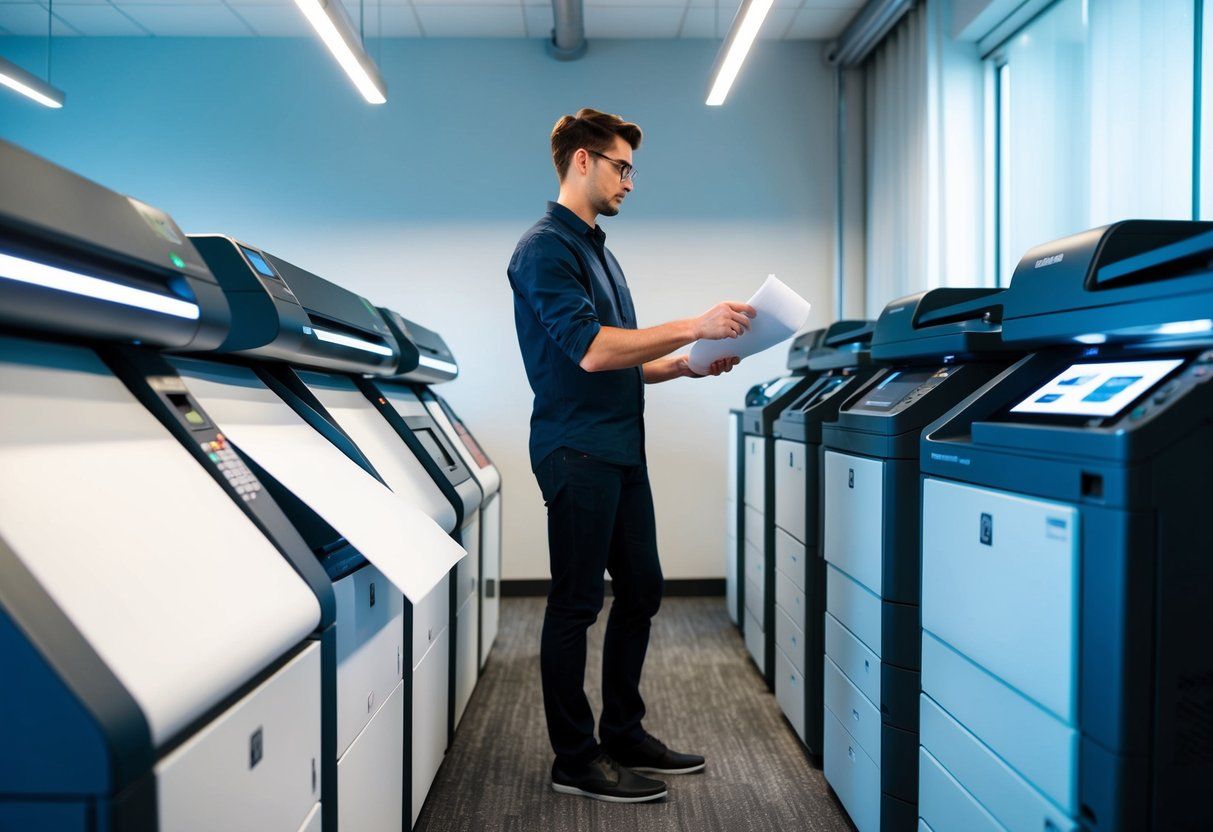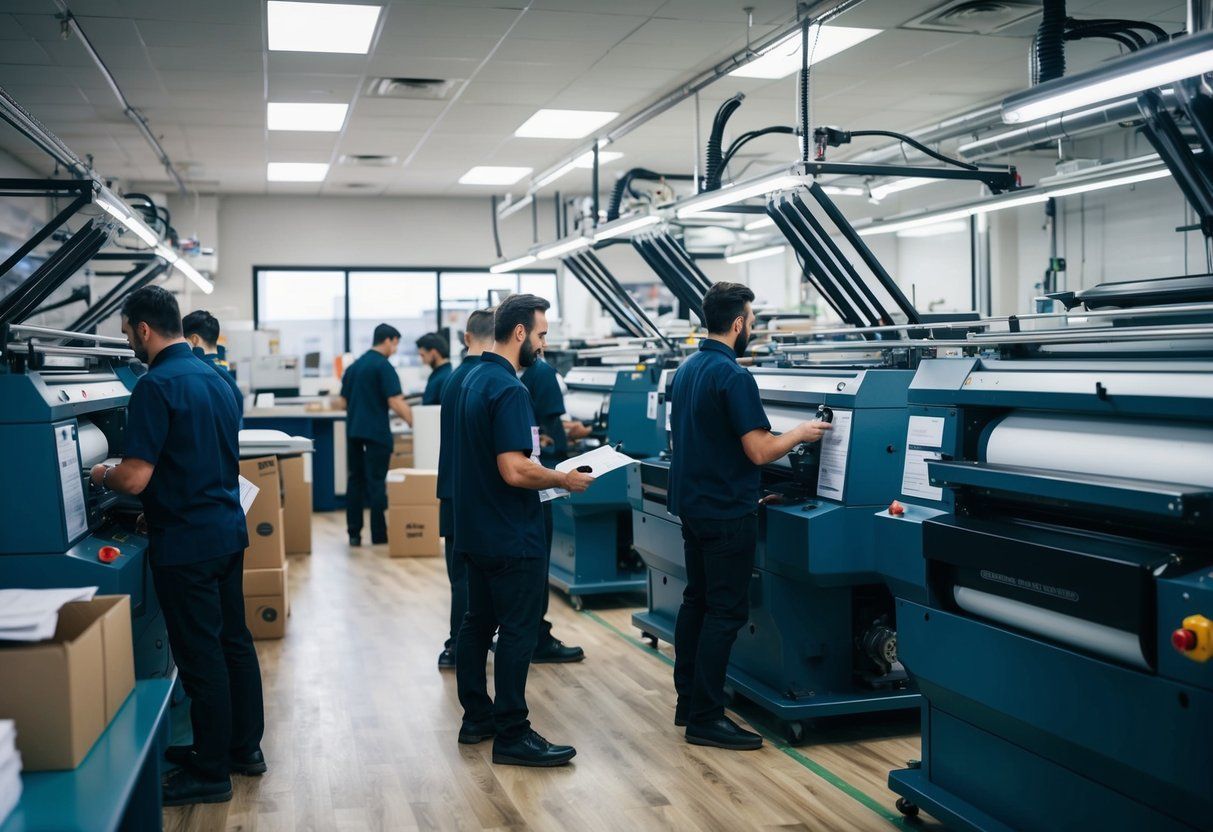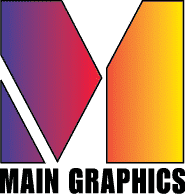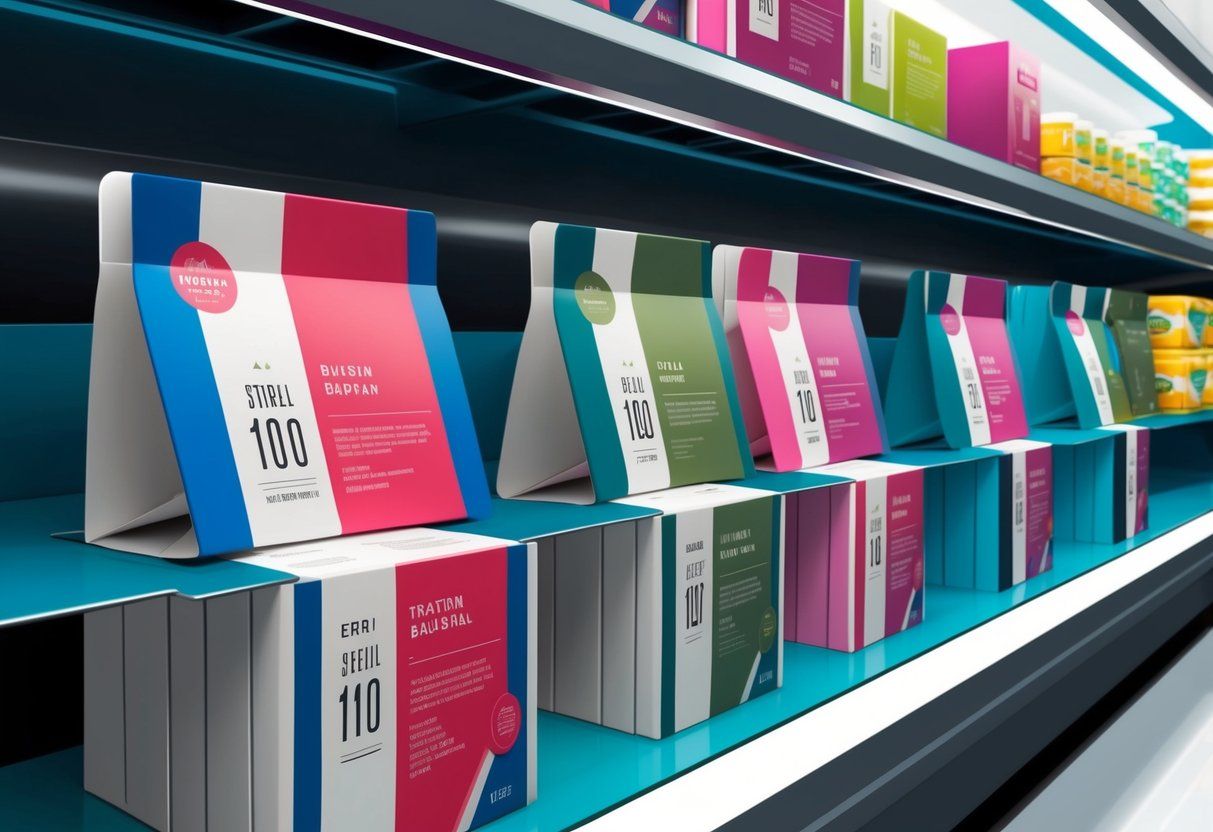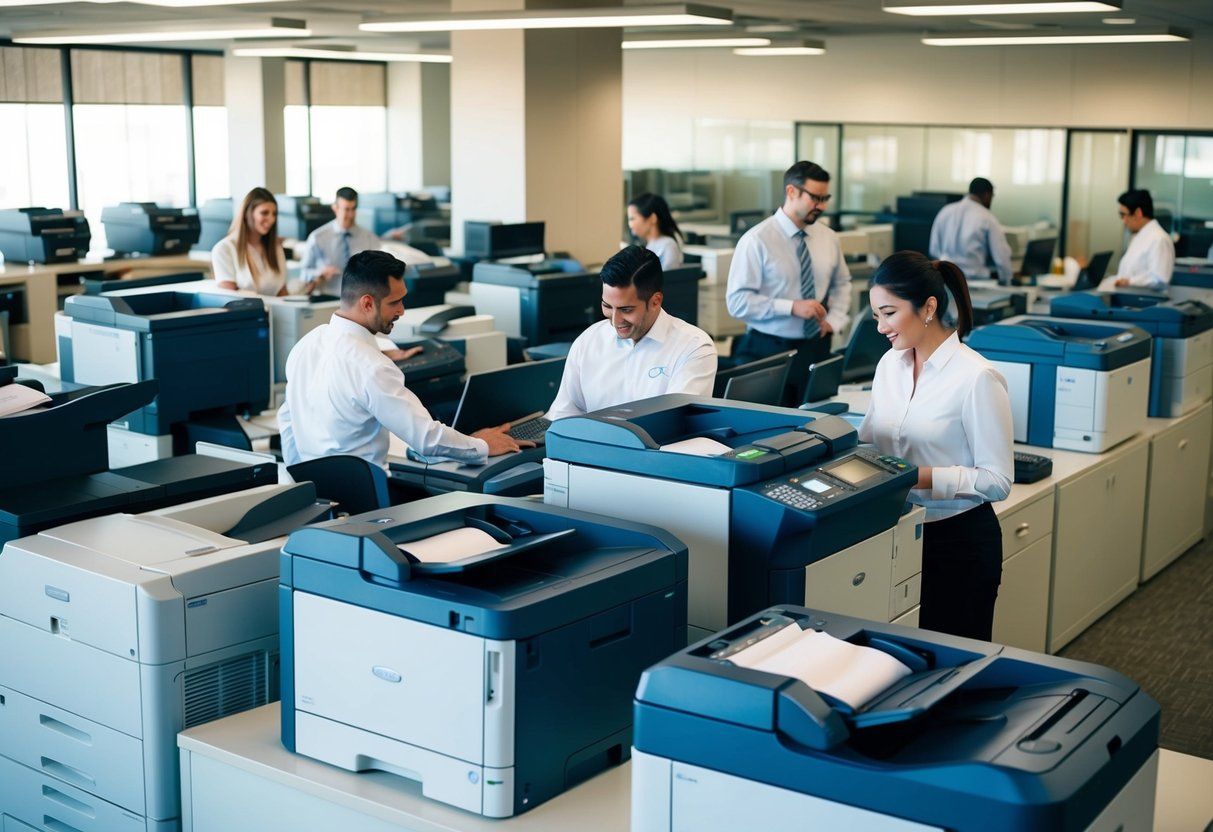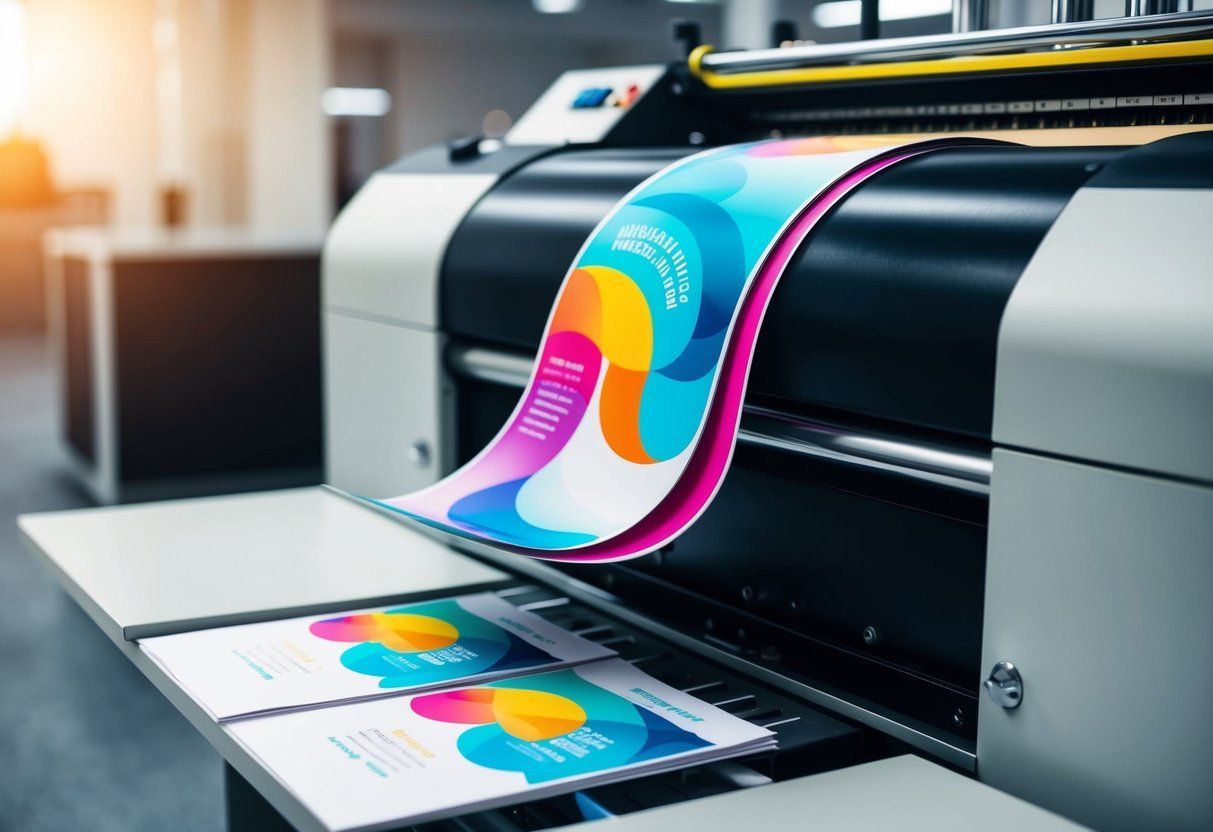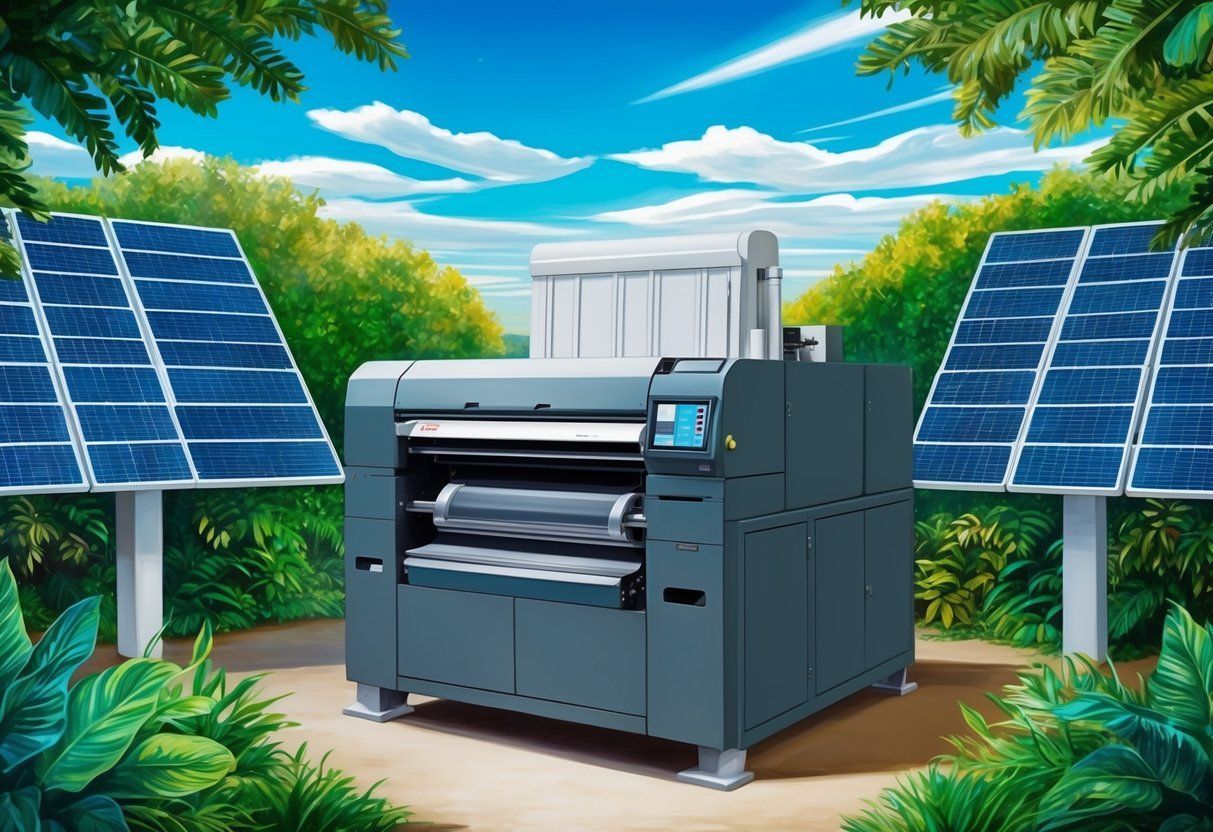How to Use a Print Shop to Expand Your Business Marketing Strategies Effectively
In a world where digital marketing dominates, print shops offer unique opportunities for businesses to expand their marketing strategies. Using a print shop effectively can enhance brand image, raise awareness, and engage customers in ways that online platforms cannot. By integrating print marketing into a business’s overall approach, owners can create tangible materials that leave a lasting impression on potential clients.

Choosing the right print shop is crucial to the success of this strategy. Businesses should look for partners that understand their needs and can deliver quality materials that reflect their brand values. From brochures and flyers to business cards and signage, each printed piece can strengthen customer connections and improve loyalty.
Measuring the impact of print efforts also helps businesses refine their marketing plans. By analyzing results and gathering feedback, they can make informed decisions for future campaigns and ensure that their print marketing continues to resonate with the target audience.
Key Takeaways
- Print marketing enhances brand image and customer engagement.
- Choosing the right print shop can elevate marketing efforts.
- Measuring success helps refine future marketing strategies.
Understanding Print Marketing in the Digital Age
Print marketing remains relevant and can complement digital strategies effectively. Many businesses benefit from using print to enhance their outreach and increase engagement with customers.
The Role of Print Marketing
Print marketing plays a crucial role in reaching customers who may not engage with digital content. Items like brochures, postcards, and business cards provide tangible ways to convey brand messages.
Many consumers still appreciate receiving printed materials. Print-on-demand services help businesses manage costs by producing only what they need. This method allows for better resource allocation and improved ROI.
Well-designed print materials can capture attention and generate interest. When used alongside digital platforms, they create a multi-channel experience that can enhance brand visibility.
Integrating Print and Digital Campaigns
Combining print and digital campaigns can lead to greater audience engagement. Businesses can leverage social media to promote printed materials, encouraging users to share photos or experiences related to those items.
Using QR codes on print materials is an effective strategy. They link consumers directly to websites, videos, or promotions, bridging the gap between physical and digital marketing.
Marketing strategies that integrate both formats can create organic marketing opportunities. For example, direct mail pieces can include personalized URLs, driving traffic to specific landing pages.
By tracking responses through digital channels, businesses can measure the success of print efforts accurately. This feedback allows for adjustments and improvements to future campaigns.
Developing Your Print Marketing Plan
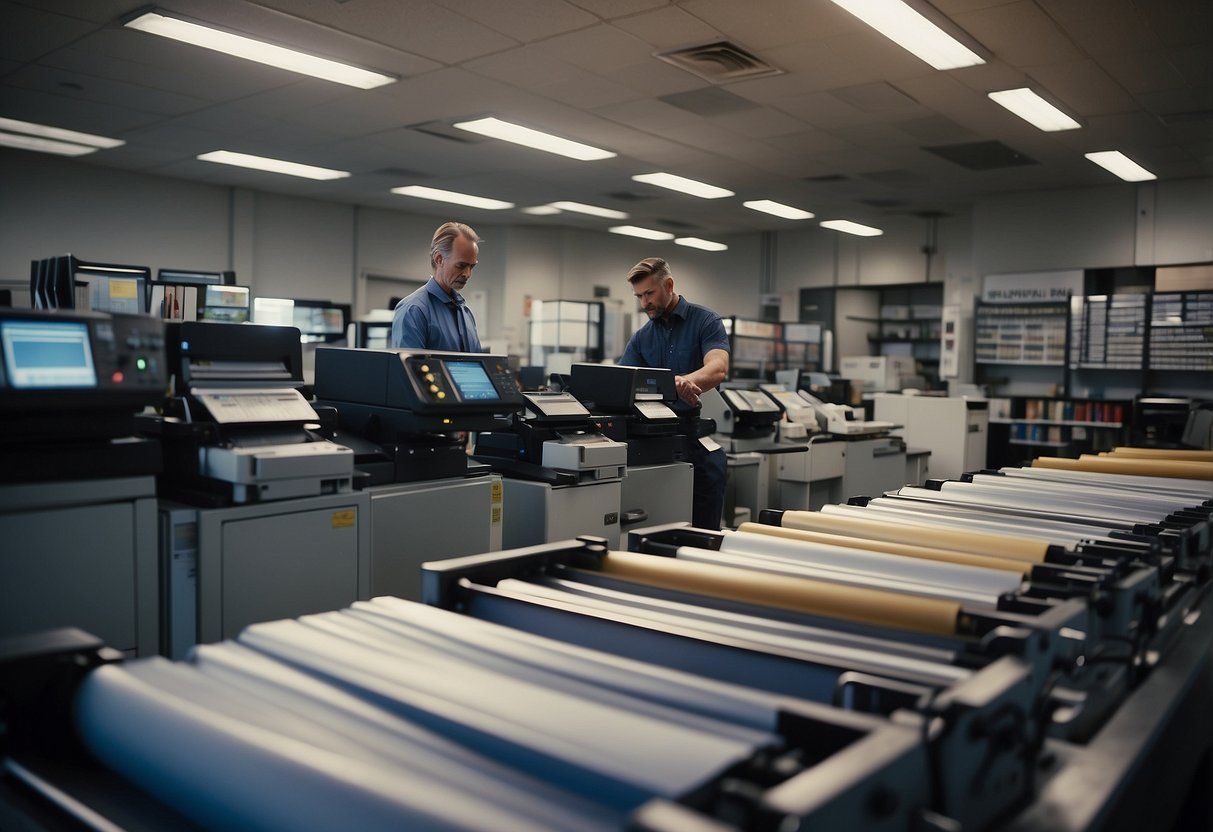
A solid print marketing plan helps businesses reach their target audience effectively. Focusing on important aspects such as audience analysis, budgeting, and setting clear objectives is essential for maximizing impact.
Audience Analysis
Understanding the target audience is crucial in print marketing. Identifying demographics such as age, gender, interests, and buying behavior helps tailor marketing materials.
Using data-driven decisions can significantly enhance this process. Surveys, social media insights, and market research can provide valuable information.
Key questions to consider include:
- Who are the ideal customers?
- What are their needs and preferences?
- How do they prefer to receive marketing information?
Gathering and analyzing this data leads to more effective marketing strategies that resonate with the audience.
Budgeting for Print Marketing
Creating a budget is a vital step in developing a print marketing plan. It helps to identify how much can be spent on materials, printing, and distribution.
A clear budget should include:
- Printing Costs: These vary based on the type of materials used (e.g., flyers, posters).
- Design Costs: Hiring a designer can add quality.
- Distribution Costs: Consider mailing expenses if sending directly to customers.
Setting a realistic budget ensures that funds are allocated effectively and aligns with overall marketing goals. Tracking expenses against the budget allows for adjustments as needed to optimize spending.
Setting Clear Objectives
Establishing clear objectives guides the overall print marketing effort. Objectives should be specific, measurable, achievable, relevant, and time-bound (SMART).
Common objectives might include:
- Increasing brand awareness through targeted flyers.
- Boosting sales of a particular product with promotional materials.
- Engaging customers through direct mail campaigns.
By defining these objectives, a business can measure the success of its marketing plan. Clarity in goals helps ensure that all marketing efforts remain focused and effective.
Choosing the Right Print Shop
Selecting a print shop is crucial for effective business marketing. The right shop can enhance materials and support brand identity. It’s important to evaluate offerings and assess quality before making a choice.
Evaluating Printing Services
When looking at printing services, it’s key to know what they offer. Some shops focus on digital printing, while others might specialize in offset printing or custom solutions.
Services to consider include:
- Business cards
- Brochures
- Posters
- Banners
Each service plays a role in marketing. It’s also smart to check for customer service responsiveness. Helpful staff can provide guidance on choosing the best products for specific needs.
Additional considerations:
- Turnaround time
- Pricing structures
- Special deals
Request quotes from multiple print shops to compare options. This process helps in selecting a shop that fits both budget and quality standards.
Assessing Quality and Portfolio
Quality is essential when choosing a print shop. A quick way to assess is by looking at their portfolio. This shows the variety and quality of their previous work.
Look for:
- Color accuracy
- Material types
- Print finishing options
Visiting a shop can also help. It allows for a firsthand look at printed samples. Online reviews and testimonials can provide insights into the experiences of other customers.
If many ratings are positive, that can indicate reliable quality. In contrast, frequent complaints may suggest issues to avoid. Taking time to review both the portfolio and feedback ensures making an informed decision.
Designing Marketing Materials that Resonate
Creating effective marketing materials is essential for capturing attention and building trust with customers. Professional design , combined with a strong brand identity , helps businesses stand out and fosters brand loyalty.
The Importance of Professional Design
Professional design plays a crucial role in print marketing materials. High-quality graphics and layout can engage potential customers and instill confidence in the brand. It reflects professionalism and attention to detail, increasing trust in the business.
Businesses should consider hiring graphic designers who understand composition, color theory, and typography. These experts know how to create visually appealing materials that capture the brand’s essence. Clear messaging combined with engaging visuals makes a lasting impression.
Using consistent design elements , such as logos and color schemes, reinforces brand identity. This consistency helps customers recognize the brand across various platforms, enhancing recall and loyalty.
Incorporating Branding and Creativity
Branding is at the heart of effective marketing materials. It includes not just logos and colors but also the tone and message of the materials. Creative approaches can set a brand apart from competitors.
A successful strategy includes thoughtful placement of logos and taglines in marketing materials. This not only builds familiarity but also enhances visibility.
Incorporating creativity ensures that materials are memorable. Unique designs or unexpected elements can spark interest. For example, using unusual shapes or textures can draw attention.
Balancing creativity with clear messaging is vital. Every design choice should serve a purpose and connect with the audience emotionally. When branding resonates, customers are more likely to engage and remember the business.
Leveraging Print Products for Marketing Expansion
Print products are a vital part of marketing strategies. Businesses can enhance visibility and connect with customers effectively through careful product selection and custom offerings.
Selecting Effective Marketing Products
Choosing the right print products is crucial for expanding marketing efforts. Brochures are a popular option because they provide detailed information about services or products in an organized manner. They can be distributed at events or through direct mail, allowing businesses to reach their target audience directly.
Postcards are another effective tool. They are cost-efficient and can grab attention quickly. Businesses can use them for promotions or announcements. Additionally, direct mail campaigns that include postcards often achieve higher response rates compared to digital ads.
By focusing on the right product line, companies can create a cohesive marketing strategy. Options like apparel and mugs not only serve as promotional items but also as everyday items that keep the brand visible. A strategic selection of print products helps enhance recognition and customer engagement.
Custom Products as Marketing Tools
Custom print products offer unique advantages for marketing. Items such as t-shirts, mugs, and other branded merchandise help create a lasting impression. Customization allows businesses to tailor products to their audience’s interests, enhancing their appeal.
Using Direct-to-Garment (DTG) printing and embroidery can elevate the quality of apparel offerings. This leads to better customer satisfaction and repeat business.
For home and living markets, items like custom pillows or blankets can be eye-catching. These items not only promote the brand but also serve as functional products, encouraging consumer use.
Utilizing custom products fosters brand loyalty. Customers are more likely to engage with brands that provide useful and personalized items. This connection can translate into increased sales and a strong customer base.
Enhancing Customer Engagement and Loyalty

Engaging customers and building loyalty are crucial for any business. Utilizing print shops for marketing can create strong connections through tangible products and effective direct mail campaigns. These strategies improve customer trust and encourage repeat business.
Using Direct Mail to Build Trust
Direct mail campaigns can effectively reach customers in a personal way. Unlike digital ads, physical mail often feels more trustworthy and tangible. A well-designed brochure or postcard can stand out and make a lasting impression.
Businesses should focus on creating a clear call to action in their mailings. This could be a special offer or an invitation to an event. Engaging content, combined with an appealing design, boosts the chances of customer interaction.
Regular direct mail can also keep the business top of mind. Sending personalized messages based on customer preferences helps build a sense of connection, which is essential for fostering brand loyalty.
Creating a Connection with Tangible Products
Tangible products such as printed flyers , loyalty cards, and branded merchandise play a significant role in customer engagement. These items offer customers something they can hold and use, which enhances brand recognition.
When customers use a branded item, they feel connected to the business. For example, a stylish loyalty card encourages repeat visits, as it symbolizes the customer’s relationship with the brand.
Offering promotional materials alongside services can also attract new leads. When these products are appealing and functional, they enhance customer satisfaction. As customers become more engaged, they are likely to show increased loyalty to the brand.
Streamlining Your Printing Workflow
An efficient printing workflow is key to successful marketing. By integrating automation and collaborating with a print shop, businesses can enhance their operational efficiency and reduce turnaround times for marketing materials.
The Impact of Automation on Efficiency
Automation plays a crucial role in improving workflow. It allows print shops to handle tasks like order processing, proofing, and printing with less manual effort.
Benefits of Automation:
- Reduced Errors: Automated proofs ensure the correct design and specifications are used.
- Faster Turnaround: Quick adjustments can be made, decreasing the time between order and delivery.
- Cost Savings: Fewer mistakes mean lower costs associated with reprints and delays.
Through automated systems, businesses can focus more on creative aspects while relying on technology for operational tasks. This balance fosters a smoother workflow, essential for meeting deadlines and managing multiple projects.
Working with a Print Shop for Operational Success
Collaborating with a print shop helps streamline the workflow. Businesses should select a print service that understands their needs and provides a comprehensive solution.
Key Considerations:
- Clear Communication: Maintaining open dialogue about expectations can prevent misunderstandings.
- Customization Options: A competent shop offers various printing services, tailored to specific marketing goals.
- Shipping Solutions: An efficient print shop should provide reliable shipping options to ensure timely delivery.
By choosing the right print partner, businesses can enhance their printing processes. This ensures that marketing materials are not only produced efficiently but also reflect the quality and professionalism desired in the market.
Integrating Print into Your Omnichannel Strategy
An effective omnichannel strategy blends print and digital marketing. By combining the strengths of both channels, businesses can enhance their marketing efforts and better engage customers. This section explores how to navigate online and offline channels and utilize user-generated content in print advertising.
Navigating Between Online and Offline Channels
Businesses should create a seamless experience for customers moving between online and offline spaces. This means having a clear strategy that connects print materials, like flyers and brochures, with digital platforms.
Print advertising can drive traffic to websites. Including QR codes or links on printed materials encourages potential customers to visit a company’s website or social media pages.
Using a consistent brand message across all channels is vital. This consistency helps build recognition and trust. Additionally, integrating print into email campaigns boosts response rates. For example, including printed postcards can remind recipients of online promotions.
User-Generated Content and Print Advertising
User-generated content (UGC) is a powerful tool in marketing. It showcases customer experiences and builds authenticity. Print advertising can effectively feature UGC, enhancing credibility.
Businesses can encourage customers to share their experiences on social media platforms. Following this, they can select the best content for their print ads. Displaying authentic user photos in brochures or on posters attracts attention and resonates with potential customers.
Incorporating UGC into print materials aligns well with a brand’s marketing strategy. By leveraging UGC in print, businesses can enhance their storytelling and create stronger connections with their audience. This strategy not only promotes engagement but also expands the reach of the brand’s message across both mediums.
Measuring the Success of Print Marketing Efforts
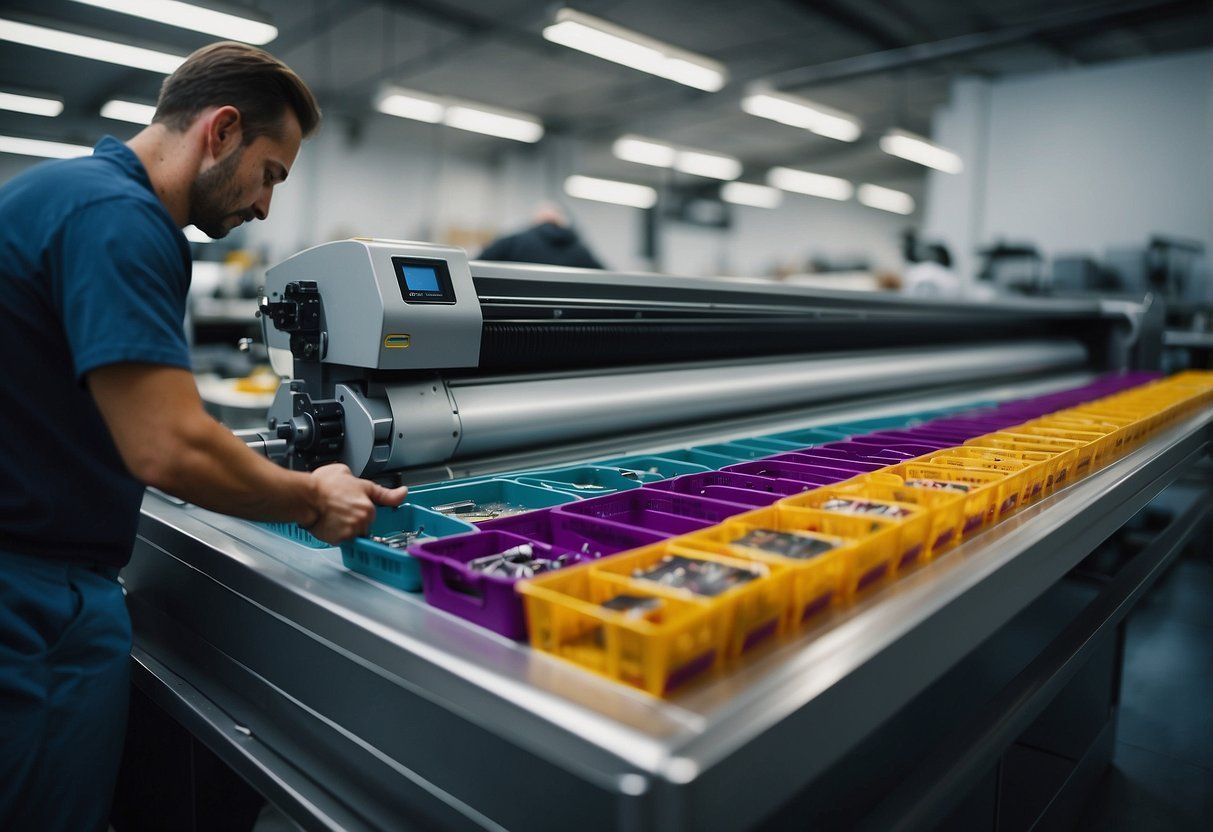
Effective measurement is key to understanding the impact of print marketing efforts. Businesses can gain insights into their return on investment (ROI), sales, and customer engagement through thoughtful tracking and analysis.
Tracking ROI and Performance Metrics
To assess the success of print marketing, businesses should focus on specific metrics. ROI measures how much revenue a print campaign generates compared to its cost. This can be tracked using the formula:
ROI = (Net Profit / Cost of Campaign) x 100
Additionally, organizations should monitor sales before and after a campaign. For instance, if a direct mail piece led to a 20% increase in sales within a month, this reflects successful engagement.
Other important metrics include:
- Traffic : Analyze website visits or store traffic triggered by print materials.
- Leads : Count new inquiries generated from brochures or flyers.
- Engagement : Measure responses to promotions or events linked to print media.
Making Data-Driven Decisions for Print Marketing
Data allows businesses to refine print marketing strategies effectively. They can implement A/B testing to compare the performance of different print designs or messages. This method helps identify which materials resonate best with the target audience.
Using customer feedback is also crucial. Conduct surveys asking customers how they heard about a product or service. Tracking this information helps pinpoint which print materials drive engagement.
Finally, businesses should regularly review collected data to adjust future campaigns. By evaluating what worked and what didn’t, they can allocate resources more efficiently, ultimately enhancing print marketing effectiveness and boosting overall sales.
Building a Local Marketing Presence
Creating a local marketing presence is crucial for businesses looking to connect with their community. Utilizing print marketing effectively can lead to increased brand awareness and generate leads. Direct mail and community engagement are two key strategies for achieving this goal.
Direct Mail and Local Advertising
Direct mail remains a powerful tool in local marketing. Businesses can design eye-catching postcards or flyers that highlight promotions, events, or new products. When targeting specific neighborhoods, it is essential to use demographic data to ensure messages reach the right audience.
Benefits of Direct Mail:
- Personalization: Tailoring messages to local customers can improve response rates.
- Tracking Results: Businesses can use unique codes or URLs to measure effectiveness.
Local advertising in newspapers or magazines can also boost visibility. Combining both direct mail and print ads allows businesses to reinforce their messages across multiple channels. They can create a cohesive marketing strategy that emphasizes community connection and brand loyalty.
Engaging the Community through Print
Engaging with the community is vital for businesses seeking to build strong local ties. Print marketing can play a significant role in this process. Companies can sponsor local events and provide printed materials like banners, flyers, and brochures to promote their involvement.
By participating in community events, businesses can reach a broader audience. They can distribute promotional items like stickers or bookmarks with their branding. This not only increases visibility but also fosters goodwill among residents.
Key Engagement Strategies:
- Local Sponsorships: Support local teams or charities to increase brand recognition.
- Workshops: Host workshops or classes that interest the community, providing printed materials to reinforce learning.
By focusing on community engagement, businesses can solidify their local marketing presence and cultivate lasting relationships with customers.
Challenges and Considerations

When using a print shop to boost business marketing, there are several key challenges to consider. These include budget constraints, maintaining quality during production scaling, and addressing environmental concerns. Each of these factors can significantly affect marketing strategies.
Budget Constraints and Cost-Effectiveness
Managing a marketing budget is essential for any business. Upfront costs for printing can be high, especially for custom designs or large quantities. Companies should evaluate options for discounted prices when ordering in bulk.
Understanding the balance between quality and cost is crucial. They must consider which printed materials provide the best value for money. This involves comparing various print shops and their offerings.
Additionally, transparent communication with the print shop about budget limits can help find cost-effective solutions. Asking for itemized estimates and exploring alternative paper stocks can reduce expenses while still appealing to customers.
Maintaining Quality While Scaling Production
As businesses grow, the demand for printed materials often increases. Scaling production can pose risks to quality if not managed properly. It is essential to work closely with the print shop to discuss quality benchmarks before large orders.
Regular quality checks during the printing process are vital. This includes inspecting paper stock and ensuring colors match expectations. Establishing a clear line of communication can help address any concerns that arise quickly.
Businesses should also consider test runs of smaller quantities. This allows them to assess quality before committing to larger orders. By maintaining high standards, companies can safeguard their brand reputation throughout the growth process.
Environmental Considerations in Printing
Environmental impact is a growing concern in the printing industry. Companies should inquire about the eco-friendliness of materials and processes used by their print shops. This includes looking for recycled paper stocks and environmentally safe inks.
Furthermore, businesses can ask about the print shop’s cleaning methods to ensure low dust levels during production. A clean environment reduces the chance of defects and waste. It is important to choose a print shop committed to minimizing its ecological footprint.
By prioritizing sustainable practices, businesses not only enhance their marketing efforts but also appeal to environmentally conscious consumers. Investing in green printing options can lead to positive brand recognition and customer loyalty.
Conclusion
Using a print shop can significantly boost business marketing strategies. As businesses continue to adapt, print marketing remains a reliable method to reach target audiences.
Future Outlook
The future of print marketing looks promising. Integration with digital
strategies allows for a stronger impact. Businesses can use printed materials
alongside online campaigns for better results.
Print Marketing Evolution
Print marketing has evolved over the years. It now includes advanced design options and targeted distribution methods. This evolution enhances visibility and drives customer engagement.
Incorporating print media can help businesses stand out. Unique designs and high-quality materials capture attention. Effective use of print can complement digital methods, creating a comprehensive marketing approach.
By leveraging these resources, businesses position themselves for success. Investing in professional printing services is a key step in reaching goals.
Frequently Asked Questions

These questions cover effective strategies for promoting a print shop and expanding its business. They also address ways to leverage digital marketing, improve content strategies, and enhance customer retention.
What strategies can I implement to promote my print shop effectively?
To promote a print shop effectively, it helps to use local advertising, such as flyers and direct mail. Participating in community events can create visibility and attract new customers. Networking with local businesses can also lead to partnerships that boost referrals.
In what ways can I leverage digital marketing to increase my printing business sales?
Utilizing social media platforms can help reach a broader audience. Creating engaging posts and ads can attract potential customers. Email marketing is another effective method for sharing promotions and updates with previous clients.
What content strategies are most effective for a printing business looking to expand its market?
A printing business can create helpful blogs about design tips , printing processes , or special projects. Sharing customer testimonials and case studies can also showcase expertise. Video content demonstrating the printing process can be captivating and encourage shares.
How can I diversify the services of my print shop to attract more customers?
Offering additional services like graphic design and promotional products can attract more clients. Providing custom packaging or specialty printing options can set a shop apart from competitors. Adding online ordering and delivery options can also appeal to busy customers.
What are proven tactics for increasing customer retention and repeat business in the print industry?
Implementing a loyalty program can encourage repeat business. Personalized follow-up emails thanking customers for their orders can create a positive experience. Providing exceptional customer service and fast turnaround times helps build lasting relationships.
Can you suggest innovative ideas for expanding a print shop’s offerings to stay ahead of the competition?
Expanding into eco-friendly printing options can attract environmentally conscious customers. Offering subscription services for regular business needs can provide consistent revenue. Collaborating with local artists for unique product lines can create fresh offerings and interest in the shop.…
